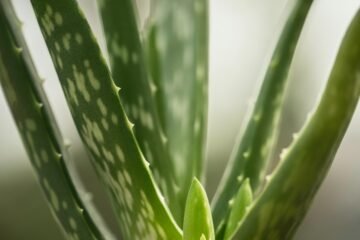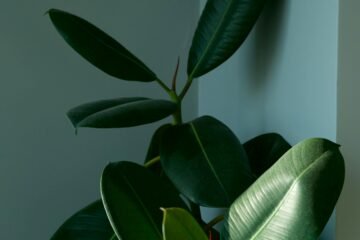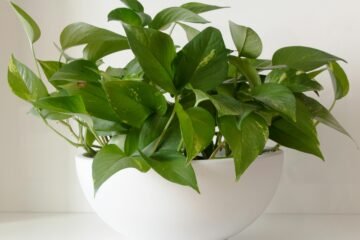Discover the exotic beauty of the Elephant Ear plant with its bold, lush foliage. Elevate your home with Alocasia’s unique charm and air-purifying benefits.



Today, I’m excited to share why Alocasia is my absolute favorite plant in my house. Last four years I have been working with Alocasia and now I have lots of parents and baby Alocasia. Known as the Elephant Ear plant, its stunning, large, arrow-shaped leaves bring an exotic flair to any room. Originating from the tropical rainforests of Southeast Asia, Alocasia has a rich history of being cultivated for centuries. With over 70 species, each with unique patterns and colors, Alocasia adds a bold statement and lush greenery to your space. Besides its beauty, it helps purify the air, making your home healthier. The intricate leaf veins and dramatic foliage are truly captivating, making Alocasia a must-have for any plant lover looking to elevate their indoor garden.
In this guide, we’ll explore everything you need to know about nurturing this beautiful plant, from lighting and watering to dealing with common issues. Let’s dive in and discover how to keep your Alocasia healthy and vibrant!
Common Name: Alocasia, elephant’s ear, African mask plant
Botanical Name: Alocasia spp.
Family: Araceae or Aroid
Plant Type: Herbaceous perennial
Mature Size: 2–10 ft. tall, 2-10 ft. spread (depends on species and variety)
Sun Exposure: Bright indirect light indoors; part shade outdoors
Soil Type: Loose, well-draining potting mix or crumbly loam
Soil pH :Slightly acidic (5.5 to 6.5)
Bloom Time: Spring and summer
Flower Color: Light butter-yellow (rarely flowers; not showy)
Hardiness Zones: 10–12 (USDA)
Native Areas: Tropical regions of Asia
Toxicity: Toxic to humans, toxic to dogs, toxic to cats
How To Care Alocasia
In the past four years, my journey with growing Alocasia has been nothing short of magical. Through trial and error, experimentation, and heartfelt dedication, I’ve discovered a method that not only ensures the health and vitality of these beautiful plants but also fills my heart with joy and satisfaction.
Lighting And Environment
My most effective way to grow Alocasia starts with understanding the plant’s innate need for a tropical environment. I recreate this environment in my home by providing bright, indirect light that mimics the dappled sunlight of the rainforest. This not only promotes vigorous growth but also enhances the stunning colors and patterns of the leaves, turning each Alocasia into a living work of art.
Watering
How I’ve learned the dance of watering Alocasia! I’ve come to understand the delicate balance between keeping the soil consistently moist and avoiding waterlogged conditions. It’s a rhythm that I’ve perfected over time, and there’s something deeply satisfying about nurturing my plants with just the right amount of water, watching them thrive under my care.
Humidity
The secret ingredient to Alocasia success! I’ve embraced this aspect wholeheartedly, surrounding my plants with humidifiers, misters, and pebble trays. The lush, tropical atmosphere not only benefits my Alocasia but also brings a sense of tranquility and serenity to my home.
Soil And Fertilization
Let’s not forget about the foundation of healthy growth. I’ve crafted the perfect soil mix, rich in organic matter and well-draining to prevent root rot. And when it comes to feeding my Alocasia, I’ve chosen a balanced, water-soluble fertilizer that provides the essential nutrients for robust foliage and vibrant colors.
This method of growing Alocasia has become more than just a hobby for me; it’s a passion, a source of joy and fulfillment. There’s something profoundly rewarding about witnessing the transformation of a tiny leaf unfurling into a majestic masterpiece, knowing that I played a part in nurturing its growth.
In essence, my love for this method stems from the deep connection I’ve formed with my Alocasia plants. They’ve taught me patience, resilience, and the importance of nurturing living beings with care and compassion. And for that, I am forever grateful.
Types Of Alocasia
Alocasia Polly (Alocasia amazonica ‘Polly’):
Known for its compact size and striking arrow-shaped leaves with deep green hues and contrasting white veins.
A popular choice for indoor gardens, Alocasia Polly adds a touch of tropical elegance to any space with its vibrant foliage.
Alocasia Zebrina:
Recognized for its unique zebra-like patterned stems and large, heart-shaped leaves.
Alocasia Zebrina thrives in bright, indirect light and high humidity, making it an eye-catching addition to any plant collection.
Alocasia Frydek (Alocasia micholitziana ‘Frydek’):
Characterized by its velvety, dark green leaves adorned with striking silver-white veins.
Alocasia Frydek prefers warm, humid conditions and well-draining soil, making it ideal for adding lush, tropical vibes to indoor spaces.
Alocasia Regal Shield:
Renowned for its grandeur, Alocasia Regal Shield features large, shield-shaped leaves with glossy, deep green surfaces.
This impressive variety thrives in bright, indirect light and requires regular watering to maintain its majestic appearance.
Pruning
In the past few years, my journey with pruning Alocasia has been a colorful adventure, filled with learning and growth. It all began with a small Alocasia plant gifted to me by a friend. Its glossy, green leaves intrigued me, but I soon realized that keeping it healthy required more than just occasional watering.
At first, I approached pruning tentatively, fearing I might harm the plant. But as I gained confidence, I began to see it as an art form—a way to sculpt and shape the plant into a thing of beauty. I carefully inspected each leaf, removing any that were yellowing or damaged, allowing new growth to flourish.
As time went on, I learned to read the signals my Alocasia was sending me. I could tell when it needed more light or when it was craving a drink of water. And with each snip of the scissors, I felt a deeper connection to the plant, as if we were communicating in a language all our own.
There were challenges along the way, of course. Pests, like pesky spider mites, threatened to undo my hard work, but I persevered, treating the plant with care and attention. And as the seasons changed, I adapted my pruning routine to suit the plant’s needs, trimming back unruly growth and shaping it into a symphony of greenery.
Potting and Repotting Alocasia
Repotting becomes necessary when the plant outgrows its current container or when its roots become pot-bound, meaning they fill the pot and start circling around the root ball. This typically occurs every one to two years, depending on the plant’s growth rate and the size of its container.
Repotting serves several purposes
Root Health
As Alocasia grows, its root system expands and may become congested or root-bound. Repotting allows us to inspect the roots, trim any damaged or rotting parts, and provide fresh soil for healthy growth.
Nutrient Renewal
Over time, the soil in the pot can become depleted of nutrients. Repotting provides an opportunity to replenish the soil with fresh, nutrient-rich potting mix, ensuring the plant has access to essential nutrients for robust growth.
Improved Growth
Repotting encourages the development of new roots and stimulates overall growth. It provides the plant with more space to spread out its roots and access water and nutrients more efficiently, leading to healthier foliage and a more vigorous plant.
Prevention of Pot-Bound Stress
When a plant becomes pot-bound, its roots may start to circle around the root ball, leading to stress and reduced growth. Repotting prevents this by giving the roots room to spread out and grow freely, promoting optimal health and vigor.
Propagation Of Alocasia
In short, how to propagate Alocasia.
Select Healthy Plants: Start with healthy Alocasia plants.
Choose Propagation Method:
Division: Separate the plant into sections, ensuring each has roots.
Offsets: Remove small plants growing around the parent plant.
Planting:
Plant divisions or offsets in pots with well-draining soil.
Keep roots buried and stems exposed.
Care:
Provide regular watering, humidity, and indirect light.
Monitor for growth and adjust care as needed.
I’ve primarily used division and offsets to propagate my Alocasia plants.
Common Problems With Alocasia I have faced



One of the most common problems I’ve faced with my Alocasia plants is yellowing leaves. Initially, I found it quite concerning, as I wasn’t sure what was causing it. After some observation and research, I realized that it was often due to overwatering or inadequate light.
To address this issue, I adjusted my watering schedule, allowing the soil to dry out slightly between waterings to prevent waterlogged conditions. I also moved the plants to a brighter location with more indirect sunlight to ensure they were getting enough light to support healthy growth.
Another challenge I encountered was pest infestations, particularly spider mites. These tiny pests can wreak havoc on Alocasia plants, causing damage to the leaves and stunting growth if left unchecked. To combat spider mites, I regularly inspected the plants for signs of infestation and treated them with insecticidal soap or neem oil as needed.
Additionally, I’ve had to deal with occasional leaf browning, especially on the edges or tips of the leaves. This was often due to low humidity levels or inconsistent watering practices. To address this, I increased humidity around the plants by using a humidifier or placing them on pebble trays filled with water. I also made sure to water the plants consistently, avoiding both underwatering and overwatering.
Overall, my experience with Alocasia plants has been a journey of learning and problem-solving. By being attentive to their needs and implementing appropriate solutions, I’ve been able to overcome common challenges and enjoy the beauty of these tropical plants in my home.




0 Comments